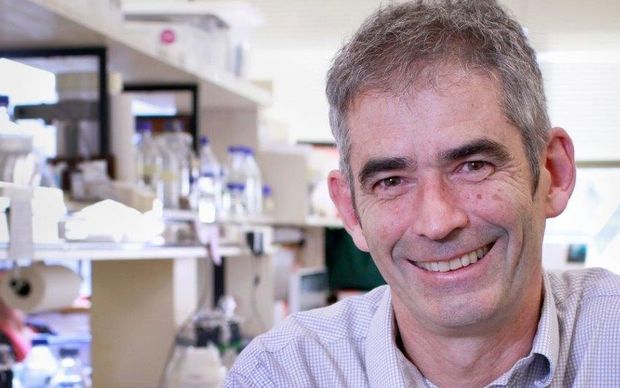Parry Guilford; Cancer Genetics Laboratory, University of Otago

The James Cook Fellowship provides funding for two years of concentrated research, free of teaching and administrative commitments. My planned research is built broadly around establishing methods to assess individual risk of developing gastric cancer. As we all know, CDH1 mutation carriers have a lifetime risk of around 70-80% of developing diffuse gastric cancer, but we have little understanding of an individual’s actual risk at any particular point in time. A better understanding of this would help individual carriers decide what the best time for surgical intervention is.
The research will be based on trying to measure what is happening to the good copy of the CDH1 gene. We know that cancer development requires loss of this good copy. Although the gene can be inactivated by several mechanisms, the main one seems to be something called “DNA methylation”. DNA methylation involves the chemical modification of a gene such that it can no longer be activated. It is a normal mechanism that plays a major role in development and tissue specialisation, but goes wrong in cancer. We hypothesise that individual carriers with a high level of methylation of the CDH1 gene in their stomachs are more likely to develop diffuse gastric cancer.
There is, however, one good thing about DNA methylation and that is that (in principle at least) it can be reversed. We plan to pursue this idea in the latter half of the research. Specifically, we intend to find out whether one drug in particular (valproic acid) can inhibit methylation of the CDH1 gene. The hope is that this drug, or more likely, more sophisticated new derivatives of it, can be used to delay or prevent the onset of gastric and breast cancer in HDGC families. What we are proposing to do is compare the DNA of people taking valproic acid with a control (non-drug) group. Fortunately, valproic acid is widely prescribed as an anti-epileptic drug and therefore we will be able to get samples from people who are taking it relatively easily. The hope is that patients on the drug will have lower levels of CDH1 methylation than the control group and thus higher expression or activity of CDH1. If we can show this, we can begin to think about clinical trials with HDGC families to see if the drug is going to be useful in “protecting’ the healthy copy of CDH1.
Research, however, is tough. Or as we always say, if it was going to be easy, it would have been done before. I therefore don’t expect this research program to be straightforward. That is, it’s very possible that valproic acid itself won’t have sufficient activity to do the required job. However, what it will do is teach us what the required standard is, and how to achieve that. I’m excited.
~ Parry